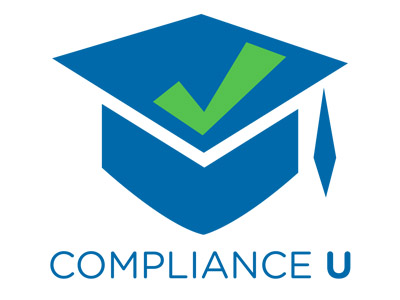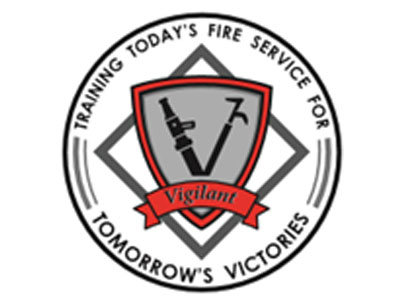 |
Evaluación e implementación de un entorno de cuidado infantil seguro (CDA 1 & 5) (Spanish) Assessing and Implementing a Safe Child Care Environment (CDA 1 & 5) |
2.00 |
Cuando las familias inscriben a su hijo en un programa de cuidado infantil, confían en que los profesionales que trabajan con su hijo lo mantendrán seguro. A medida que los bebés y niños pequeños curiosos se desarrollan, su deseo de explorar presenta desafíos de seguridad únicos. Este curso guía a los profesionales que trabajan con bebés y niños pequeños para evaluar los espacios de juego, las experiencias de los niños y las prácticas actuales para maximizar la seguridad de los niños.
When families enroll their child in a child care program, they trust that the professionals working with their child will keep him safe. As curious infants and toddlers develop, their desire to explore presents unique safety challenges. This course guides professionals who work with infants and toddlers to assess play spaces, children’s experiences, and current practices to maximize children’s safety. |
 |
Growth Mindset in the Classroom |
1.25 |
This course covers how to incorporate a growth mindset in the classroom. It includes a comparison between growth and fixed mindset, as well as ways to help students have a "can do" attitude in school. It will help you develop new knowledge about this concept and how you can support a growth mindset in the classroom. This is just one of the many K-12 education courses we offer. |
 |
Safety Communication and Training Techniques |
1.50 |
This course covers certain safety and logistics measures for the workplace. This includes topics like different types of safety training, creating safety programs with different learners in mind, and how to use various types of media to communicate objectives. |
 |
Paraprofessional Math Skills 2: Geometry and Measurement |
2.50 |
This course covers Paraprofessional Math Skills: Geometry and Measurement. It is just one out of three Paraprofessional Math Skills courses, and one out of eight ParaPro prep courses that will prepare you on K-12 topics. This course will help you develop your knowledge of these mathematical concepts and help you apply them to abstract and real-life situations. After taking these prep courses, you should be prepared for the ETS ParaPro Assessment. This course can be taken as a stand-alone learning event, as part of a broader paraprofessional curriculum, or in preparation for the ParaPro Assessment.
After completing this course, you will be able to:
Understand and represent time and money in more than one way.
Convert between units or measures in the same system.
Identify basic geometrical shapes.
Perform computations related to area, volume, and perimeter for basic shapes.
Graph data on an xy-coordinate plane. |
 |
Fundamental Tools to Monitor Child Development (CDA 7) |
2.00 |
This course immerses early care and education professionals in the powerful trio of observation, documentation, and assessment. Discover how these tools allow you to closely monitor each child's progress, identify individual needs and interests, and tailor support accordingly. Dive deeper into using assessment activities to refine and elevate the quality of preschool care, ensuring every child reaches their full potential. |
 |
Fire Origin and Cause – Basic |
2.00 |
This course is an introductory level course that defines fire cause and origin investigation and arson awareness. This course explains fire origin, cause, and arson and a description of common fire causes. Fire cause classifications are defined, and arson motives are described. Signs of arson are identified, and methods for evidence preservation are outlined. The course is evaluated with a final exam that requires a passing score of 80%. The clock time for this course is approximately 2-hour. |
 |
Presentation Methods and Debriefing Activities |
2.00 |
There is no "one size fits all" approach to working with children and youth, and this is especially true when it comes to how we present and debrief activities. During this course, participants will understand the importance of the delivery and debriefing of an activity to help children and youth make meaning, as well as some specific methods that can be incorporated into the program right away. |
 |
Understanding the Behavior of Children and Youth |
2.00 |
The development of children and youth can cause them to behave in ways that can be trying for even the most knowledgeable and experienced staff. When staff understands what is driving the behavior, they can help to guide and encourage acceptable behaviors. This course will provide participants with the knowledge and skills necessary to prevent unwanted behavior by meeting the needs of children and youth before they act out. |
 |
Preventing Sexual Harassment and Understanding California Law |
0.50 |
This course will teach California employees how to recognize sexual harassment, defines the rights and responsibilities of employers and employees, and provides an overview of the legal remedies available in sexual harassment lawsuits. |
 |
Planificación de Carrera y Salario (Spanish) Career Planning and Salary |
1.00 |
En este curso, aprenderemos consejos sobre cómo descubrir sus necesidades profesionales, explorar diferentes opciones profesionales, investigar salarios, adquirir habilidades laborales esenciales y cómo planificar su carrera.
In this course, we'll learn tips on how to discover your career needs, explore different career options, research salaries, gain essential job skills, and how to plan your career. |
 |
Implicit Bias (Corrections) |
1.00 |
In this course, you’ll learn about implicit biases that happen despite our best intentions. After completing this course, you will be able to:
Define implicit bias.
Describe how implicit bias can impact the workplace or an organization.
Identify the steps you can take to further educate yourself about this topic. |
 |
Project Teams: Projects and Project Teams (Instructor Guide) |
1.00 |
A project is a task or a group of tasks with a distinct beginning and end that is undertaken to create a unique product or service. A project must have defined objectives to clearly indicate when the project is complete. In addition, a project must have a clear end user who will use or benefit from the product or service produced by the project team.
When an organization develops temporary needs that are outside the scope of individual employees’ responsibilities, it often forms project teams to address these issues. As a manager, it is your responsibility to recognize the need for a project team, determine the type of team required for the project, and assign employees to the team.
In this course you will learn to: identify the phases and requirements of a successful project, and build and organize a project team and avoid pitfalls in project teams.
This Instructor's Edition of this course includes notes and suggestions to assist you in presenting the material, whether in an in-person classroom setting, or as an instructor-led online or distance-learning course. It also provides you with the answers to questions found in mid-lesson activities, as well as in the quiz that concludes the course. |
 |
Searching Online |
0.75 |
This course covers the fundamentals of searching online. From using basic features, such as the homepage and address bar, to using "advanced search" to find very specific information, this course will cover it all. |
 |
Zoonotic Disease and Biosecurity |
2.00 |
Every year, zoological organizations are faced by new challenges in maintaining the health of their animal collections. Zoonosis, or disease that can be spread between species, forms one of the greatest threats to the safety of animals, guests, and keepers. Using a case study from a zoonotic disease concern at the San Diego Zoo, you will learn the basics of zoonotic disease identification and prevention, including standard record keeping, best practices, health and safety protocols for keepers, and the understanding of how disease can be spread. |
 |
School-Age Care as a Family Service: Emphasis on Planning Opportunities for Family Involvement |
2.00 |
The foundation for getting parents involved in school-age programs is to keep parents well informed about what is happening in the program. Quality programs also provide parents with opportunities to make suggestions and give feedback on program services through suggestion boxes, feedback forms, and surveys. When parents are encouraged to have input in the program, they develop trust and confidence in the program, and feel a sense of pride and ownership. They are more likely to participate as resourceful partners with program staff when they know their ideas are welcome and valued. Finally, because parents are all different from each other, it's important to provide many different opportunities for them to connect with the program. Staff in quality school-age programs recognize that all parents don't have to be involved in the same way. |
 |
Creativity and Innovation: Personal Creativity |
1.34 |
Creativity is often considered a talent that some people have. Actually, creativity's a skill that everyone can nurture through exercise and practice. You can prepare yourself both mentally and physically to be creative.
In this course you will learn to: prepare yourself mentally and physically to be creative, and use your experiences, innocence, intuition, and sense of adventure to increase your creativity. |
 |
Handline Operation #1101 (Instructor Guide) |
1.00 |
This is the Instructor Guide for Lesson #1101 Hoseline Operation. This training session is a skill demonstration and evolution. The presentation is an instructor lead discussion that reviews the importance of fire streamflow for structural firefighting. The lesson reviews standard GPM flows for the AHJ appliances and discusses appropriate situations for the use of those appliances. The training session is concluded with three skills stations that require firefighters to operate hoselines and fire streams from an exterior position. |
 |
Guiding School-Age Children in Groups: Supervision and Boundaries |
1.00 |
When large numbers of children are involved in the program, it is challenging to create and deliver school-age program activities that can meet the needs of all children. The key to success is taking a systematic approach to program planning. It is important for staff to understand how to select appropriate activity options and use effective management strategies that make it possible to offer a balanced variety of simultaneous activity options. This understanding will help staff plan and implement a program that effectively supports, nurtures, and guides individual differences and fosters positive interaction among children in groups. |
 |
Hazard Communication Basic |
1.00 |
This course covers the basics when it comes to hazard communication. The topics will range from the Hazard Communication Standard to the labeling of hazardous materials. |
 |
Spinal Motion Restriction Decisions |
1.50 |
Two of the University of Rochester’s finest educators discuss the decision-making that is involved with Spinal Motion Restriction.This enlightening discussion offers information that will allow providers to better interpret standing protocols.Subsequently providers will be able to create and execute better treatment plans.
Jeremy Cushman M.D., M.S., NYS Paramedic is the Chief of the Division of Prehospital Medicine, Department of Emergency Medicine, at the University of Rochester.
Mark Gestring, M.D., F.A.C.S., is the Director of Adult Trauma at the University of Rochester’s Regional Trauma Center.
Enjoy the conversation as these two experts in their respective fields escort you through the nuance that every provider should consider when treating a patient with possible spinal trauma. |
 |
Social, Emotional, and Behavioral Supports for Teachers |
1.00 |
This course explores how to support students emotionally, socially, and behaviorally. It is important to understand the value of building rapport with students to promote resilience. Additionally, this course will explore the components of student behavior, how to identify the function of behavior, and how to create a supportive environment for students. |
 |
GED: Math - Unit 5: Coordinate Plane |
1.00 |
Welcome to Unit 5: Coordinate Plane. If you've ever graphed points, or read a graph, you've worked with the coordinate plane. In this unit, we'll learn about points, the lines that connect them, and the equations used to create them. |
 |
Online Money Tips |
1.00 |
In this course you will learn specific tools to help you save your money. Tools such as online banking, contactless payment, and specific resources to help you obtain free material will go a long way with your financial goals. Every penny counts! |
 |
Environmental Systems |
2.00 |
Many of the animals exhibited in zoos and aquariums have very specific environmental requirements that must be met in order to support the life form and better ensure its welfare. This course will explore the unique biological, physiological, and welfare requirements of several varied types of animals; their unique requirements; and the implications for the provision of these requirements. |
 |
Neurogenic Shock Reviewed |
1.00 |
Terms that are commonly heard, such as neurogenic shock and spinal shock often confuse EMS providers. Knowing the meaning of each term is only the beginning. In this overview, Dr. Jeremy Cushman offers a few pearls of wisdom that will assist EMS providers of all levels with the secondary assessment of patients who may have suffered life-threatening spinal trauma. Test: This multiple choice exam is designed to test your knowledge of the material you just reviewed. You have one attempt to gain an 70% or higher on this exam. Please take your time and answer each question carefully.
|


























